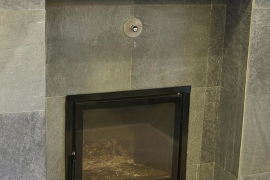Russian people have a love for the bath since ancient times. For our ancestors, the bathhouse was almost a sacred place. Here people were born, prepared for the wedding, performed various rituals.
Now washing in a bath has ceased to be a sacred act, and real Russian baths are almost never built. Saunas are mainly built in summer cottages, fitness clubs, sanatoriums and other establishments.
What is the difference between a Russian bath and a sauna?
Bath
Previously, in Russia, the bathhouse was heated in a black way: then there were no stove pipes, and the smoke poured directly into the steam room. To prevent the accumulation of carbon monoxide, the bath was ventilated by opening the door. Often in the baths they "got drunk". People explained this phenomenon by the fact that the bannik was angry. Bannik is the spirit of the bath. They feared and respected him, tried to appease him: they put food, poured water. It was impossible to use foul language in the bathhouse, it was possible to wash on certain days. It was strictly forbidden to take a steam bath on holidays. The first baths, which were heated in white, appeared only in the middle of the 18th century.
The main difference between a bath and a sauna is the presence of a steam room. In the Russian bath, it is customary to steam with the help of water steam and a broom. Due to the steam in the bath, the humidity is very high, up to 100%. The maximum temperature reaches 60 ° C.
Therefore, a person in a Russian bath is much more comfortable, and a Russian bath is more useful for health. The steam room creates optimal conditions for uniform heating of the entire human body, both outside and inside.
Steam in the bath is formed by watering the heated stones that are inside the stove. The Russian bath consists of 2 rooms: a dressing room, where a person undresses, and a steam room proper.
The whole washing process takes place in the steam room:
- steam supply;
- the washing up;
- quilting with a broom;
- steaming on the shelves.
Here a person moves all the time. Then, after washing in the bath, relaxation and rest comes.
Stoves for the Russian bath Izistim
The ideal choice for a Russian bath will be stove stoves.






Sauna
Sauna, which also has a thousand-year history, was no less sacred place for the Finns.
Finns, unlike Russians, heated the sauna very often. Even surgical operations were performed in it, since the high temperature kills germs. In addition, beer was brewed here, fortune-telling and simply warmed up. If a sauna was flooded in one house, then they called the whole village to steam.
Although both the bathhouse and the sauna are made the same, that is, from wood, the washing process takes place in different ways. In the sauna, the air is very dry (about 20%) and the temperature rises to 100 ° C. Thanks to the dry air, the high temperature is easily tolerated. Hot air evenly warms up the body, as a result it sweats. Together with sweat, toxins are removed from the body. But the Finnish sauna is not suitable for everyone because of the dry air and high temperature.
In the sauna, a person just lies and sweats, the washing process takes place later in the shower. Therefore, the sauna consists of 3 rooms: a dressing room or changing room, a steam room and a shower. In the sauna, stones are laid out on top of the stove, open. Water is supplied to them little by little. Due to the high temperature, the water evaporates quickly. If you water the stones heavily, you can get a burn of the mucous membrane.
In the sauna, a person relaxes, gets pleasure, and then we just wash in the shower.
Conclusion
Both the bathhouse and the sauna have a beneficial effect on the body as a whole, help to relax, recuperate and get rid of toxins and toxins.
Thus, what is better to choose a bath or sauna depends on the person himself, his health and preferences.



